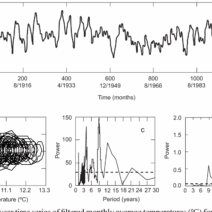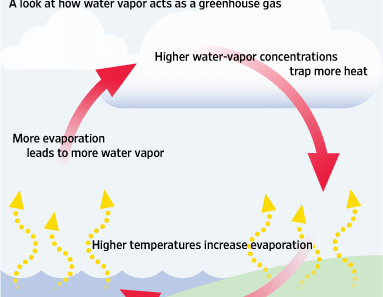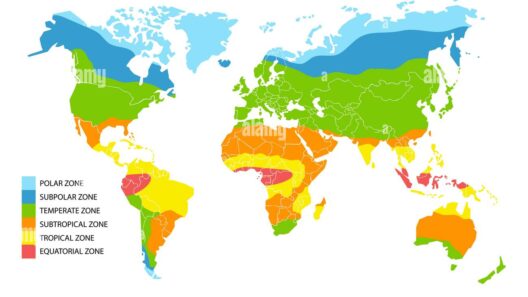The climate of our planet hinges on a delicate tapestry of interconnected factors. Understanding these elements is akin to unraveling the cords of a well-worn, ancient scroll that, when fully comprehended, reveals the intricate interplay between natural processes and human influence. While many factors contribute to Earth’s climate, three stand out as the most pivotal: greenhouse gas concentrations, solar radiation, and ocean currents.
To commence our exploration, consider greenhouse gases. These atmospheric molecules, such as carbon dioxide (CO2) and methane (CH4), act like a thermal blanket wrapped around the Earth. Through the natural greenhouse effect, they help maintain a temperate climate, ensuring that our planet doesn’t plunge into an icy desolation. However, it is the excessive infusion of these gases, primarily due to anthropogenic activities like fossil fuel combustion and deforestation, that transforms this protective embrace into a suffocating shroud.
As industrialization took its first breaths, humanity began to release vast amounts of CO2. The result? A steady rise in global temperatures. Among the myriad consequences are severe weather events, melting ice caps, and rising sea levels—each symptom a stark reminder of this voracious appetite for carbon emissions. The metaphor here is potent: greenhouse gases are akin to the overstuffed locks of a dam, holding back more water than it can handle. Once the dam breaks, catastrophe ensues.
Transitioning to the second significant factor, solar radiation, one can perceive it as the life-giving star in the cosmic dance, a blazing orb that fuels all living processes through its radiant energy. The sun’s output, although relatively constant, can vary due to an array of cosmic influences. This cosmic variance, analogous to a painter altering strokes on a canvas, can result in ephemeral climatic shifts.
The sun’s energy sustains the delicate balance of Earth’s temperature. When the solar output wanes, global temperatures may dip, ushering in glacial periods, while an increase can lead to scorching heatwaves. It is during these fluctuations that Earth’s climate exhibits its most dramatic transformations. Understanding the sun’s role is crucial, for it does not simply bathe the Earth in warmth; it dictates weather patterns, influences ocean temperatures, and indirectly shapes ecosystems.
However, the sun alone does not wield the power to dictate climate. The third vital factor we must consider are ocean currents. The great oceans, comprising 71% of our planet’s surface, act as colossal conveyor belts, redistributing heat across the globe. Picture them as swirling eddies of warmth and cold, like a maestro conducting an orchestra of climatic variables.
These currents, such as the Gulf Stream, significantly affect climate by transporting warm water from the equator toward the poles and bringing cold water back in return. This interaction shapes weather patterns, influencing precipitation and temperature across vast distances. Disruptions in these currents, whether through climate change or profound geological events, can yield far-reaching repercussions. The metaphor is clear: ocean currents are the threads in the fabric of the Earth’s climate system, and when they fray or snap, the entire tapestry is at risk.
As we juxtapose these three factors, what emerges is a complex web where each thread supports and influences the others. The burgeoning concentration of greenhouse gases raises atmospheric temperatures, which in turn can alter local weather systems and consequently impact ocean currents. The symbiosis of greenhouse gases, solar radiation, and ocean currents serves as a testament to the fragile interconnectedness of our climate system.
This intricate nexus forms the foundation of contemporary climate models, which are employed to predict future scenarios. Yet, as predictions are made, one must acknowledge that uncertainty looms over these models. The interconnectedness is relentless; changing one factor can cascade and disrupt the entire system, leading to unintended climatic consequences.
Moreover, the implications of these changes go beyond mere statistics or temperature anomalies. They manifest in potent ways: food shortages from failed harvests, displacement of populations due to rising sea levels, and increased frequency of natural disasters. Each shift reverberates through societies, echoing far beyond environmental boundaries, impacting economies, health, and social structures.
In conclusion, the climate of our Earth is not solely the product of weather patterns or geological forces. It is a complex interplay of greenhouse gases, solar energy, and oceanic currents that we must understand if we hope to navigate the uncertainties that lie ahead. Every entity, whether individual or collective, bears the weight of influence over climate, rendering awareness and action imperative. The fate of our planet teeters on this axis, and recognizing the profound significance of these three factors is the first step in altering its course.
As stewards of this Earth, we must advocate for measures that mitigate greenhouse gas emissions, invest in renewable energy sources, and protect our oceans, the lifeblood of our global climate. In doing so, we reclaim our agency in this dance of existence, forging a future that honors both the intricate beauty of our planet and the generations yet to come.








